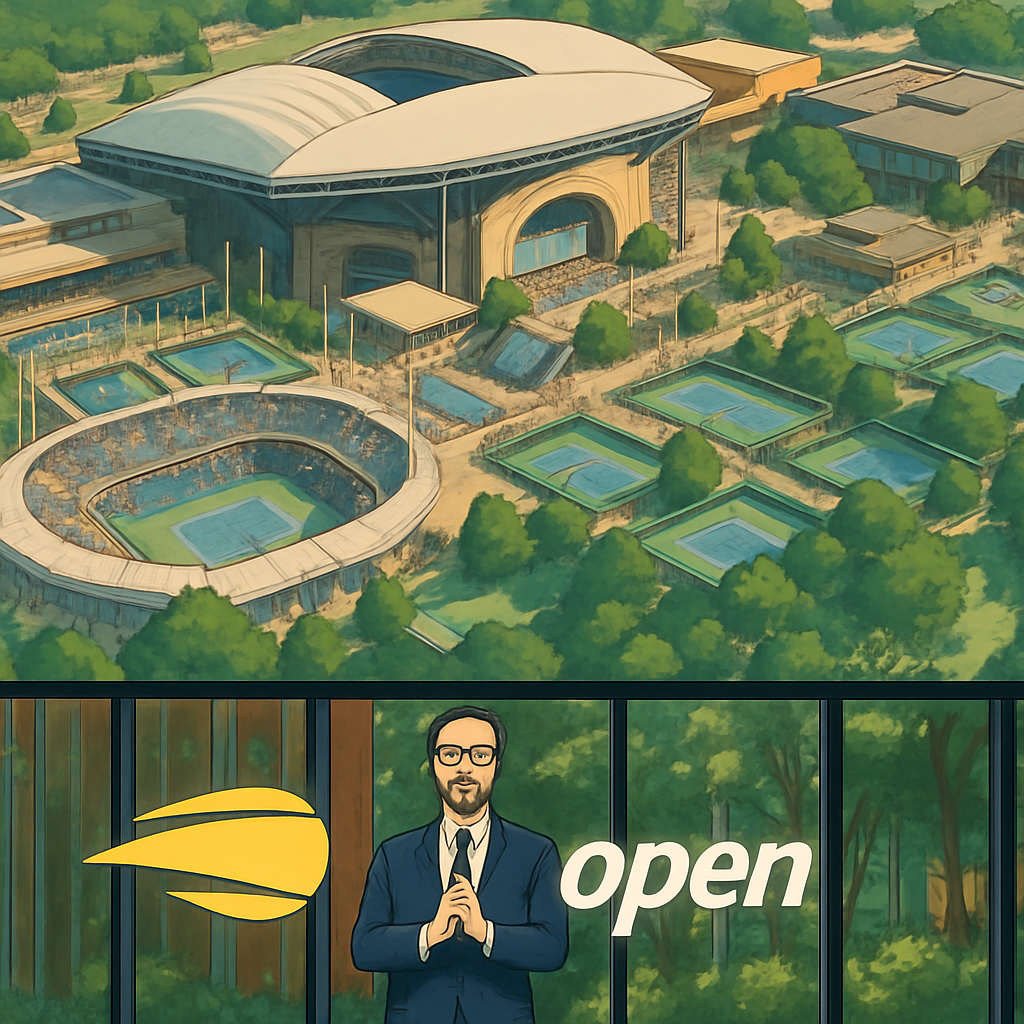NEW YORK — In a surprising turn of events, U.S. Tennis Association (USTA) CEO and Executive Director Lew Sherr has announced his resignation just days after unveiling an ambitious $800 million (£600 million) redevelopment plan for Arthur Ashe Stadium, the centerpiece of the U.S. Open. The abrupt decision has sent shockwaves through the tennis world, raising questions about the future of the project and the leadership of American tennis.
Sherr, who took the helm of the USTA in 2022, revealed his departure in a statement late Tuesday, citing personal reasons. "After careful consideration, I have decided to step down from my role at the USTA to focus on family and personal priorities," he said. His exit comes at a critical juncture, as the organization prepares for the 2024 U.S. Open and seeks to finalize funding for the stadium overhaul.
A Sudden Exit Amid Major Plans
Sherr’s resignation follows the high-profile announcement of a sweeping modernization plan for Arthur Ashe Stadium, the largest tennis venue in the world. The proposed upgrades include:
- A retractable roof to minimize weather disruptions
- Expanded seating and premium hospitality spaces
- Enhanced player facilities and fan amenities
- Sustainability initiatives, including solar panel integration
USTA President Brian Hainline acknowledged Sherr’s contributions in a press release: "Lew has been instrumental in advancing our strategic vision, including the Arthur Ashe Stadium redevelopment. We respect his decision and wish him the best." However, insiders speculate whether internal disagreements over the project’s scope or financing played a role in Sherr’s departure.
Challenges Ahead for the USTA
With Sherr’s exit, the USTA faces immediate leadership uncertainty. The organization has yet to name an interim CEO, though Chief Operating Officer Nicole Sherry is expected to assume day-to-day responsibilities. The timing is particularly delicate, as the USTA must now:
- Secure funding commitments for the stadium project
- Navigate negotiations with sponsors and local authorities
- Maintain momentum ahead of the 2024 U.S. Open
Financial and Logistical Hurdles
The $800 million price tag for the Arthur Ashe upgrades has drawn scrutiny, particularly as the USTA seeks private investment to supplement its reserves. Critics argue that the organization should prioritize grassroots tennis programs over stadium improvements. "This is a massive bet on infrastructure at a time when participation growth is stagnating," noted sports economist Marc Ganis.
Meanwhile, logistical challenges loom. The retractable roof alone—a feature long demanded by players and fans—requires precise engineering to accommodate the stadium’s 23,771-seat capacity. Similar projects, like Wimbledon’s Centre Court roof, faced cost overruns and construction delays.
Reactions from the Tennis World
Players and stakeholders expressed mixed reactions to Sherr’s resignation. Former U.S. Open champion Andy Roddick tweeted: "Lew Sherr had big shoes to fill after [predecessor] Gordon Smith. Hope the USTA finds someone who can keep American tennis moving forward." Others, like rising star Coco Gauff, emphasized continuity: "The players just want a smooth tournament and good facilities. Whoever takes over, that’s the priority."
The timing also raises questions about the USTA’s role in broader tennis governance. Sherr was a vocal advocate for modernizing the sport’s revenue-sharing model and expanding digital engagement. His departure leaves a void in these discussions ahead of key ATP and WTA meetings later this year.
What’s Next for the USTA?
The USTA board is expected to launch a global search for Sherr’s successor, with potential candidates including former players and executives from other major sports leagues. Key priorities for the new CEO will include:
- Finalizing the Arthur Ashe Stadium redevelopment
- Strengthening partnerships with the ATP and WTA
- Addressing declining youth participation rates
As for Sherr, his legacy may hinge on whether the stadium project moves forward. "He laid the groundwork for a transformative era in American tennis," said sports journalist Jon Wertheim. "Now, it’s up to the next leader to see it through."
The USTA has not disclosed Sherr’s exact departure date, but sources indicate he will remain in an advisory role during the transition. With the 2024 U.S. Open just months away, the clock is ticking for the organization to stabilize its leadership and reaffirm its vision for the sport.
For now, the tennis world watches closely, wondering whether Sherr’s sudden exit will stall progress—or catalyze a new chapter for American tennis. As one insider put it: "This isn’t just about a roof. It’s about the future of the game."

